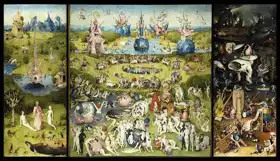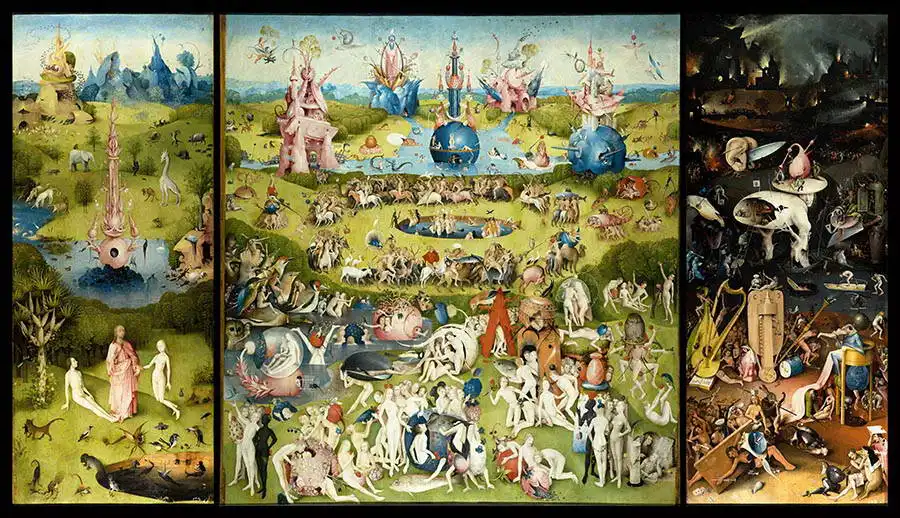About this finishing
Print. The image is printed on the top quality 10-ink HP Z9PS printer on HP matte 270 g / m2 paper. You can choose any size to an accuracy of 1 cm. A margin of 5 cm around the image is added to the size of the motif.


You can find a detailed description about our finishings
here.
The Garden of Earthly Delights
Date:
1503-1515Medium:
oil on boardLocation:
Museo del Prado v MadriduDimensions:
380 x 220The triptych should probably be read chronologically. The left part of the painting represents the creation of the world and Adam and Eve. The middle part of the painting, with its references to earthly pleasures, is a tribute to life, love, pleasure and freedom. It is an explosion of vitality and euphoria, which, however, leads to the underworld... (third part of the picture). The symbolism of the image is simple: God created a world that was clean and that people quickly inhabited. However, people were led astray by evil and turned the world into an abode of self-indulgence and sin. This leads to inevitable punishment. The painting of the picture is crowded with figures from different walks of life, in an infinite number of attitudes and activities. Everything is complemented by imaginary animals, various creatures and fantastic plants. Some human beings are depicted in the painting as worms, burrowing through giant fruits representing the world.
Bosch painted picture The Garden of Earthly Delights in 1503-1515. Prevailing color of this fine art print is vivid and its shape is long. Original size is 380 x 220. This art piece is located in Museo del Prado v Madridu. This image is printed on demand - you can choose material, size and finishing.
Hieronymus Bosch (1450 -1516). Dutch painter whose real name is Jheronimus van Aken (his name is derived from the city s-Hertogenbosch). He came from a family of painters - his grandfather and uncles were all painters. Much of his work is devoted to sin and human moral failure. Bosch painted demons, half-human creatures, to evoke fear and unearth the evil hidden in man. He became famous mainly for his triptychs (the most famous is the
Garden of Earthly Delights. He was the first who created and worked with the world of dreams, fantasy creatures, nightmares and fears, as a response to former medieval religious ideas (about
deadly sins, a naturally sinful humanity, hell and eternal damnation).



